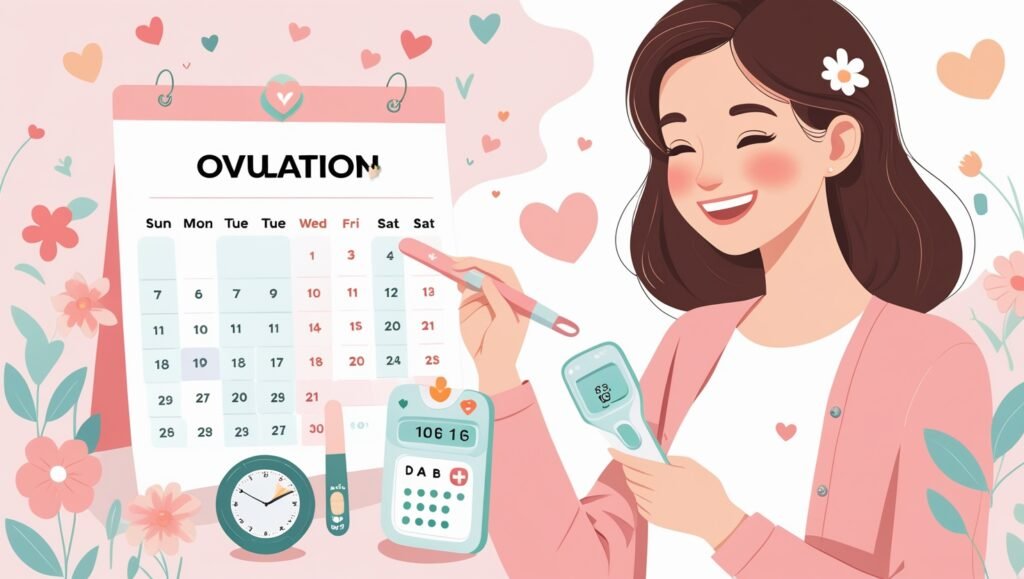Pregnancy Conception Calculator
Estimate your conception date based on due date, last menstrual period, or ultrasound date. Understand your fertility window with our accurate calculator.
Calculation Method
Enter Your Due Date
How the Conception Calculator Works
This calculator estimates your conception date based on different inputs: due date, last menstrual period, or ultrasound date. For due date calculations, it subtracts 266 days (38 weeks) from your due date to estimate conception. For last period calculations, it adds your cycle length minus 14 days to estimate ovulation. The fertile window accounts for sperm survival of 3-5 days before ovulation.
Important Notes
- Conception typically occurs 11-21 days after the first day of your last period
- Sperm can survive in the body for 3-5 days, widening the possible conception window
- These dates are estimates – only about 5% of women deliver on their exact due date
- For medical advice, always consult with your healthcare provider
Related Tools: Online Pregnancy Calculator – Know Your Baby’s Due Date Today, Healthy Pregnancy Weight Gain Calculator & Guidelines
Step-by-Step Guide for using of this Tools
1. Select Your Language
- At the top-right, choose your preferred language from the dropdown menu (English, Spanish, French, Dutch, Hindi, Urdu, Chinese, Arabic).
2. Choose Calculation Method
Select one of three options:
- Due Date (if you know your expected delivery date)
- Last Period (if you remember the first day of your last menstrual cycle)
- Ultrasound Date (if you have ultrasound results)
3. Enter Required Information
Depending on your selected method:
🔹 If using Due Date:
- Enter your expected due date (from your doctor or pregnancy app).
🔹 If using Last Period:
- Enter the first day of your last period.
- Select your average cycle length (default is 28 days).
🔹 If using Ultrasound Date:
- Enter the date of your ultrasound.
- Enter the gestational age (in weeks) from the ultrasound report.
4. Click “Calculate Conception Date”
- The tool will estimate:
- Most probable conception date
- Fertile window (possible dates when conception occurred)
- Current pregnancy age (how many weeks pregnant you are now)
Understanding the Results
✅ Conception Date – The most likely day fertilization happened.
📅 Fertile Window – Sperm can live 3-5 days, so conception may have occurred within this range.
👶 Pregnancy Age – How many weeks have passed since conception.
Important Notes
- This is an estimate (only ~5% of women deliver exactly on their due date).
- For medical advice, always consult a doctor.
Example Use Cases
- “My due date is December 15. When did I conceive?”
→ Select Due Date, enter Dec 15 → Get conception estimate (~March 23 ± 5 days). - “My last period started on June 1. When did I ovulate?”
→ Select Last Period, enter June 1 → Get fertile window (~June 11-17). - “My ultrasound at 8 weeks was on August 10. When was conception?”
→ Select Ultrasound, enter Aug 10 & 8 weeks → Get conception date (~June 12).

Pregnancy Conception Calculator FAQ
1. How accurate is this calculator?
- It provides estimates based on medical averages:
- Due Date Method: Assumes conception occurred ~266 days (38 weeks) before delivery.
- Last Period Method: Uses ovulation timing (cycle length – 14 days).
- Ultrasound Method: Relies on gestational age from scans.
- Note: Only ~5% of women deliver on their exact due date. For precise dating, consult a doctor.
2. Why does the “fertile window” span several days?
- Sperm can survive 3-5 days in the body, so conception may occur days after intercourse. The window includes:
- 5 days before ovulation (sperm survival).
- 1 day after ovulation (egg lifespan).
3. My cycle isn’t 28 days. Will this affect results?
- Yes! Adjust the “Average Cycle Length” in the Last Period Method for better accuracy.
- Shorter cycles → Ovulation occurs earlier.
- Longer cycles → Ovulation occurs later.
4. Can I use this if I don’t know my last period or due date?
- Use the Ultrasound Method if you’ve had a scan. Enter:
- The ultrasound date.
- Gestational age (e.g., “8 weeks”) from the report.
5. Why does my conception date differ from my doctor’s estimate?
- Doctors may use:
- LMP (Last Menstrual Period) dating (assumes ovulation on day 14).
- Early ultrasound measurements (more accurate for irregular cycles).
- This tool lets you compare both methods.
6. Can I calculate future conception dates (for planning pregnancy)?
- Yes! Use the Last Period Method to predict ovulation:
- Enter the first day of your last period.
- Set your average cycle length.
- The “fertile window” shows your best dates to try conceiving.
7. What if my ultrasound gestational age doesn’t match my LMP dates?
- Ultrasounds are more reliable after 7–8 weeks. Trust the ultrasound result and use that method in the calculator.
8. Why isn’t my language supported?
- Currently available: English, Spanish, French, Dutch, Hindi, Urdu, Chinese, Arabic.
- Need another language? Contact us to request it!
9. Is my data stored or shared?
- No. This tool runs entirely in your browser—no data is saved or sent to servers.
10. Where can I learn more about conception timing?
- Check the “How It Works” section in the calculator or consult:
💡 Pro Tip
For best results, use multiple methods (e.g., compare due date vs. ultrasound results) and track ovulation with:
- Basal body temperature (BBT).
- Ovulation predictor kits (OPKs).